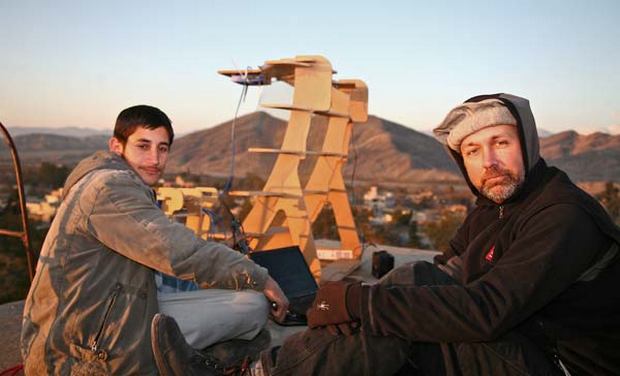If there's anything we learned from the revolutions in the Middle East, it's that the internet has become a critical tool for burgeoning democracies. So what to do in places where the internet is tightly controlled, or just unreliable? For residents of Jalalabad, Afghanistan, the solution is: build your own. Using help from the National Science Foundation and a pile of household trash, they've built an open-source wireless network that can transmit up to several miles.
The only commercial components of the "FabFi" system are the wireless routers — all of the networking can be done with home-brewed reflectors, most of which can be fabricated from whatever is lying around.
Commercial wireless routers are mounted on homemade RF reflectors covered with a metallic mesh surface. Another router-on-a-reflector is set up at a distance; the two routers then create an ad-hoc network that provides Internet access to a whole network of reflectors. The number of reflectors which can be integrated into the network is theoretically endless; FabFi's network covers most of Jalalabad.
The reflectors can be built out of wood, metal, plastics, stone, clay, or any other locally available product that the metallic mesh can be attached to. FabFi also designed their devices to run on power generated by an automobile battery, which means the networks an also go “off-the-grid” if necessary.
There are currently 45 FabFi nodes in and around Jalalabad (plus 50 in another network in Kenya), but users can add their own nodes to the system for about 60 U.S. dollars worth of materials — boards, window screens, plastic tubs, a lot of stuff that ends up discarded. Some of the reflectors in the Jalalabad system were built for less than $3.


